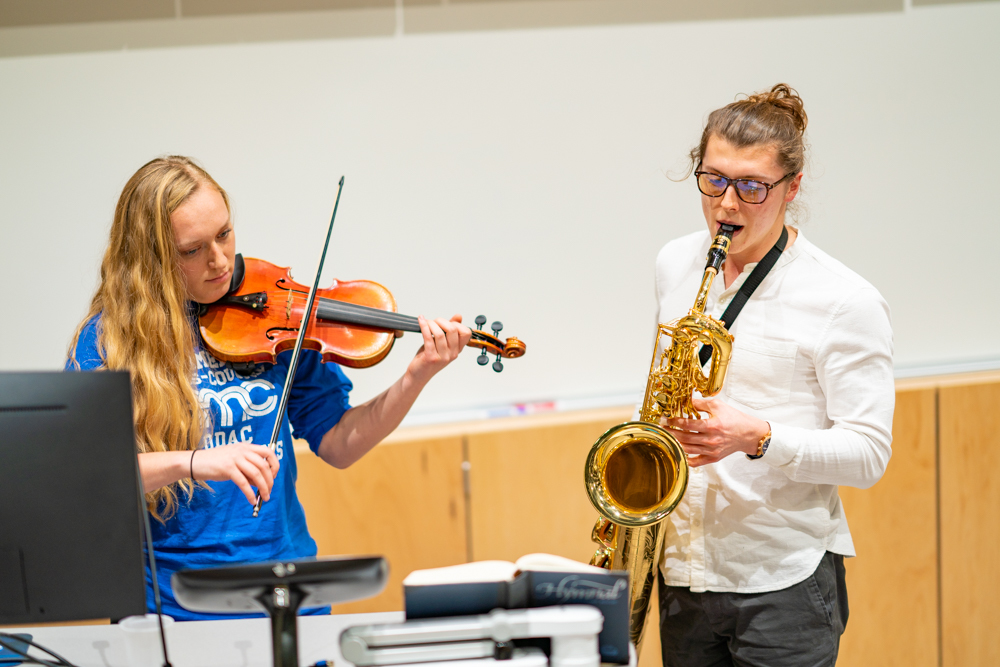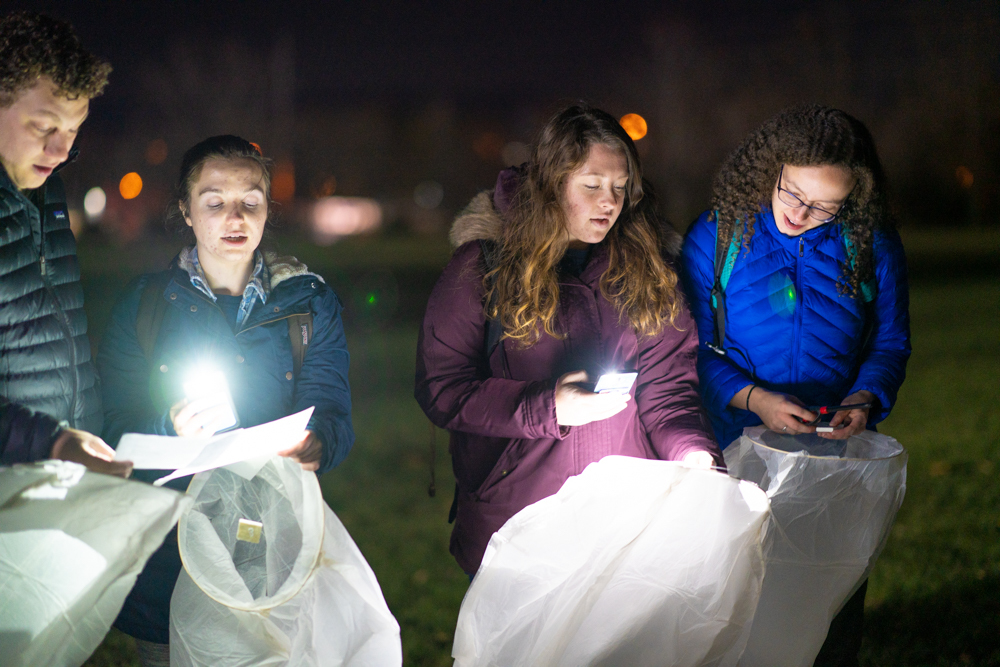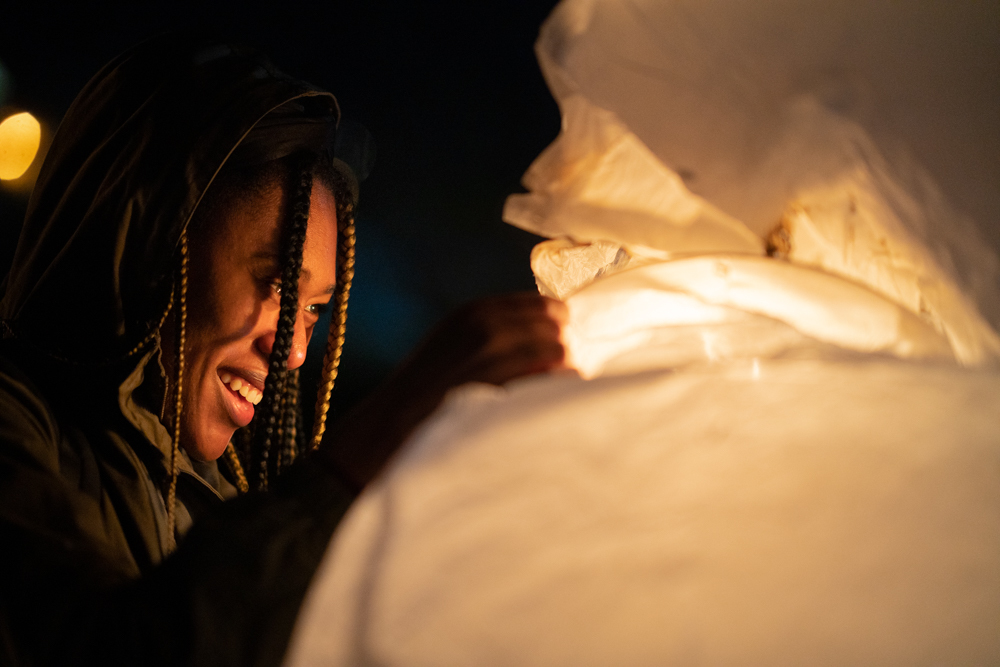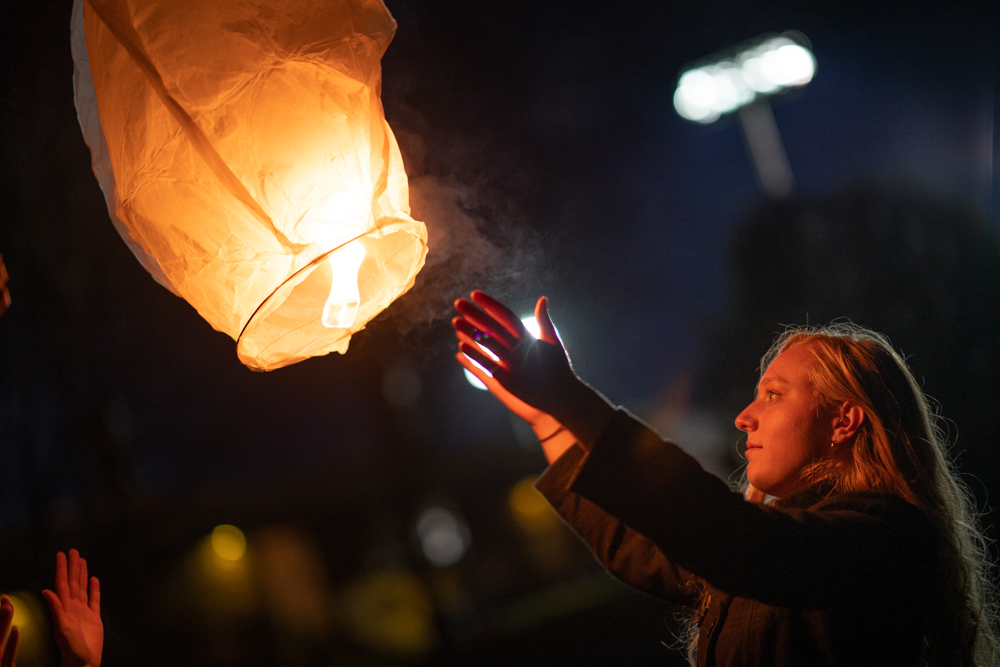Paper lanterns rose into the night sky last week behind the Suter Science Center at Eastern Mennonite University. The 16 students who released them gathered to honor those who had donated their bodies to science, providing their anatomy lab with cadavers to study.
READ MORE: EMU alumni currently in medical school talk about the experience of cadaver dissection.
“Most likely, tonight, there are people out there missing them,” Professor Julia Halterman said, opening the memorial. But this service was very different from a funeral, she explained, as “we celebrate how we have learned from them in their death.”
They only know the cadavers’ first names: Anna, Jeane, Richard, and Earl. Yet several students referred to them as their “silent teachers.” They made surprising discoveries, in some cases – one of the men had three lobes in his left lung, making him one of just 3 percent of people with the condition.

Students shared reflections on and gratitude for the dissection experience. Then they sang “Amazing Grace” along with classmates Caroline Lehman on violin and Jonathan Nielsen on baritone saxophone, before trekking out into the cold to release the lanterns.
“Her sacrifice allowed me to learn and grow,” one student reflected. “I pray that you all rest peacefully.”
“In so many classes, we just learn the theoretical concepts,” another said. He enjoyed getting to “pass on” the gift of his donor’s sacrifice by leading prosections with underclassmen.
Another was thankful that someone would choose “for a student somewhere to get to experience this.”

Krystalee Revanna, a second-year graduate student in the MS in Biomedicine program, helped organize the memorial service. A teaching assistant for the anatomy classes, she is also a leader of EMU’s Pre-Students of Osteopathic Medicine Club, which hosted a suture clinic immediately prior to the service. In one of their last interactions with the cadavers this semester, students practiced suturing skills.
“Honoring our donors for the first time was a special experience,” Ravenna said. “I hope this is a tribute that continues long after I graduate. Having students tell me they now feel closure truly touched me. Our donors gave us a learning opportunity in the lab, but more importantly, they taught us the importance of humility.”

The anatomy lab is only offered in the fall. The cadavers will remain at EMU through the spring semester, to be used by neuropsychology and lower-level anatomy and physiology students.
Their bodies would then be transported to Kyger Funeral Home in Harrisonburg for cremation, and their ashes sent to the donors’ families, Halterman said.

This is an astonishing response to cadaver dissection, where bodies are more often treated with gallows humor. I think that using them for a year then cremation and restoring the ashes to family adds some complications and expense, no doubt, but what a testimony to the human spirit. Bravo! Anne
Brings back vivid memories of when I worked as a secretary at the University of Manitoba, Faculty of Medicine in the Anatomy Dept. in the 1950/60s. Every spring we had burial services for all the cadavers used through the winter, going to up to 3 or 4 cemeteries with pastors/priests from the different religions represented by the deceased people. All students and staff, including University admin attended; also families were invited. Good way to honor those who continued to serve even after their death. (My husband, Glen Koop, attended EMS in the early 70s.)